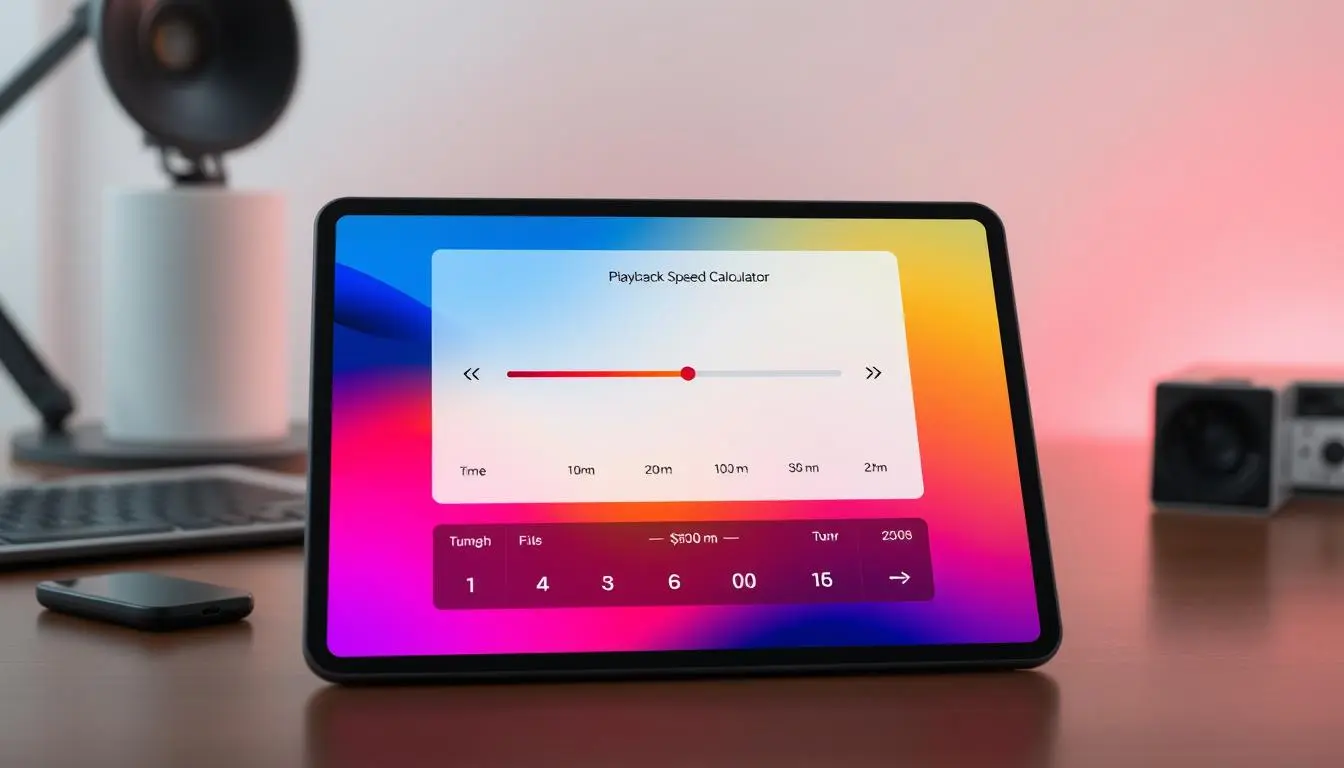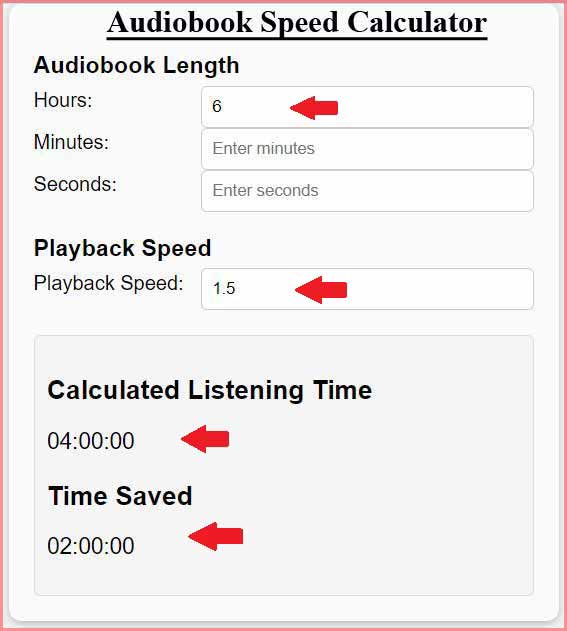Just How to Use a Playback Rate Calculator for Flawlessly Timed Media
In the contemporary landscape of media intake, understanding the use of a playback rate calculator can significantly boost the effectiveness and efficiency of your watching or listening experience. By understanding the nuances of changing playback rate, you can enhance your interaction with content, whether for instructional functions or leisure.
Understanding Playback Rate Calculators
Playback speed calculators are essential devices for individuals looking for to maximize their sound and video consumption. These calculators enable customers to figure out the most effective playback speed for different sorts of media, whether for academic objectives, entertainment, or personal productivity. By inputting the initial period of a media file and preferred amount of time for conclusion, users can conveniently compute how quick or slow-moving to adjust playback speeds.
Understanding the mechanics of playback rate is essential. Criterion video clip and sound playback typically operates at a speed of 1x, indicating the web content is dipped into its regular rate. Playback rate calculators offer options to speed up or decrease this rate, allowing individuals to experience web content in a much more tailored manner. Greater playback speeds can press time, enabling quicker consumption of information, while reduced rates can boost understanding, particularly for complex material.

Advantages of Changing Playback Speed
Changing playback rate offers countless benefits that satisfy the unique preferences and requirements of different individuals. Among the key advantages is boosted comprehension. By reducing intricate web content, such as instructional lectures or detailed tutorials, customers can comprehend elaborate ideas more efficiently. On the other hand, accelerating much less thick material, like informal vlogs or information segments, enables efficient consumption without giving up understanding.
One more advantage is boosted time management. Customers can customize their seeing experience to fit their timetables, allowing them to consume more material in less time. This versatility is specifically valuable for hectic professionals or pupils balancing multiple duties.
Additionally, changing playback rate can improve involvement. Users often locate it easier to preserve emphasis when the pacing aligns with their personal rhythm, lessening disturbances and promoting continual attention. This is especially pertinent in the realm of on the internet learning, where engagement straight correlates with retention.
Finally, playback speed changes can fit different discovering designs. Visual and acoustic students take advantage of tailored pacing that aligns with their processing speeds, inevitably promoting a much more customized and effective learning atmosphere. Hence, changing playback speed serves as a powerful tool for optimizing media usage throughout varied contexts.
Exactly How to Make Use Of a Playback Rate Calculator
Efficiently utilizing a playback rate calculator can dramatically boost your media intake experience. To start, recognize the total length of the media material you want to change-- this might consist of videos, audiobooks, or podcasts. Next off, determine your preferred playback speed. Typical prices consist of 1.25 x for somewhat faster consumption more info here or as much as 2x for fast listening, depending on your convenience level.
When you have these figures, input the overall duration into the playback speed calculator. The device will instantly compute the new period based on your selected rate. For instance, if you have a 60-minute video and pick a rate of 1.5 x, the playback calculator will indicate that the new period is 40 minutes.
Many calculators enable you to save setups for future referral, making it less complicated to keep regular playback rates across various media kinds. By following these actions, you can efficiently harness the power of a playback rate calculator to tailor your media experience.
Tips for Optimal Playback Settings
Locating the ideal playback setups can substantially improve your total media experience. To enhance your playback, think about starting with an evaluation of your material kind. For Homepage example, academic video clips usually gain from a little raised rates, enabling efficient details absorption, while motion picture experiences might require typical rates to appreciate nuances in narration.
Next, guarantee that your tool's sound and video settings are set up properly. Change the resolution based upon your web rate; reduced settings can protect against buffering concerns (Playback Speed Calculator). Additionally, consider making use of headphones or outside speakers for improved audio quality, especially in dialogue-heavy content
One more critical aspect is the playback rate itself. Use a playback speed calculator to figure out the perfect rate for your content. A general standard is to increase speed by 1.25 x to 1.5 x for many instructional videos, while maintaining standard speed for intricate narratives.
Last but not least, take breaks during prolonged viewing sessions. This technique not only protects against fatigue however additionally permits much better retention of information. By personalizing these playback settings, you Related Site can create a tailored viewing experience that matches your preferences and maximizes interaction.

Usual Mistakes to Avoid
One of the most common risks in taking care of playback settings is overlooking to evaluate the details needs of the web content being watched. Different kinds of media, such as lectures, documentaries, or home entertainment, require unique approaches to playback rate. Stopping working to tailor settings can lead to loss of critical information or decreased satisfaction.
Another blunder is overlooking the influence of private knowing designs. Some customers might gain from slower playback to much better absorb complicated info, while others may like a quicker pace for light web content. Overlooking these preferences can prevent effectiveness.
In addition, numerous individuals neglect to use the playback rate calculator successfully. It is necessary to input accurate time estimates and take into consideration the desired audience. Inaccurate computations can develop mismatched assumptions, resulting in frustration.
Last but not least, customers typically underestimate the relevance of examining different speeds. Hurrying to a predetermined setting without experimentation can result in suboptimal seeing experiences. Making the effort to readjust playback speed based on individual and content-specific demands is vital for making the most of involvement and understanding. By staying clear of these common blunders, users can dramatically improve their media usage experience.
Conclusion
In conclusion, playback rate calculators serve as vital tools for optimizing media usage. Executing the ideal playback rate, along with mindful changes, guarantees an engaging and reliable seeing experience.